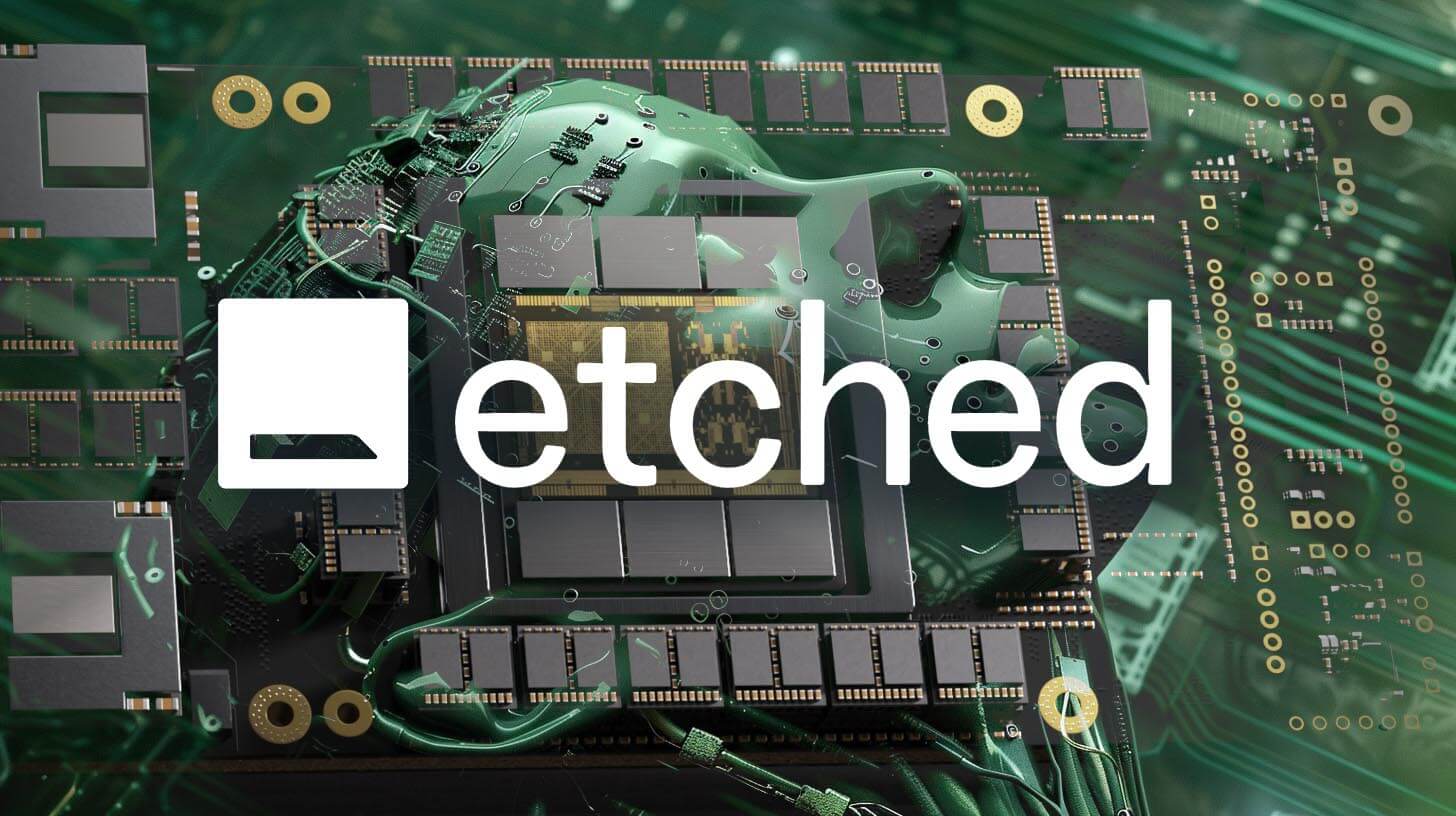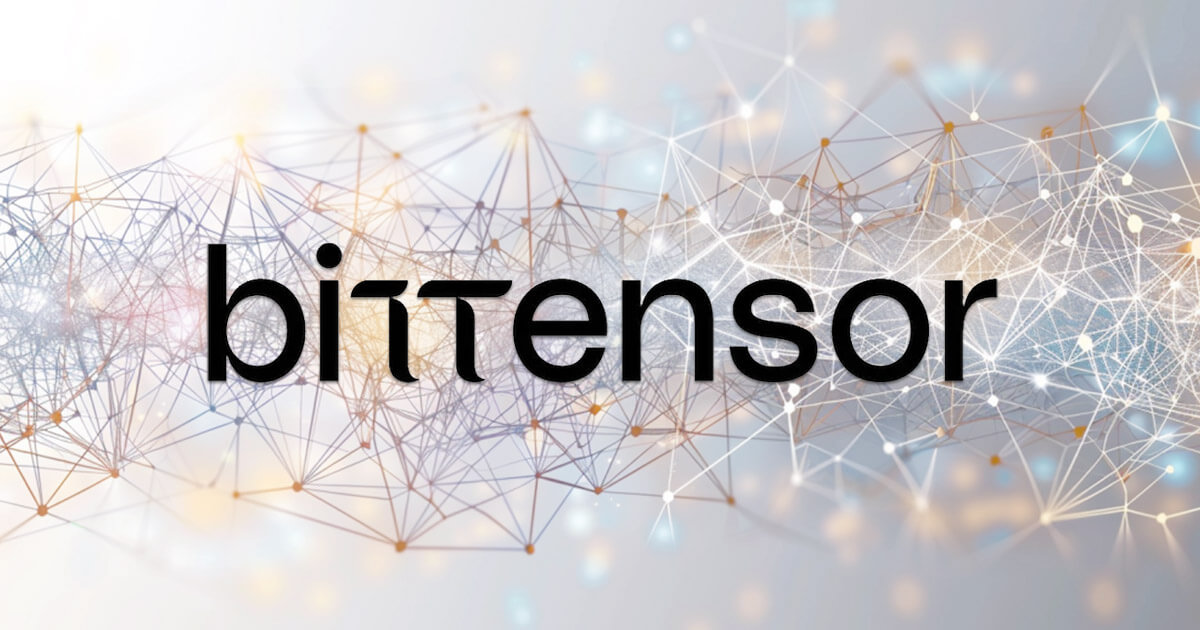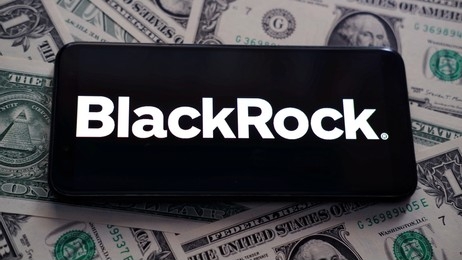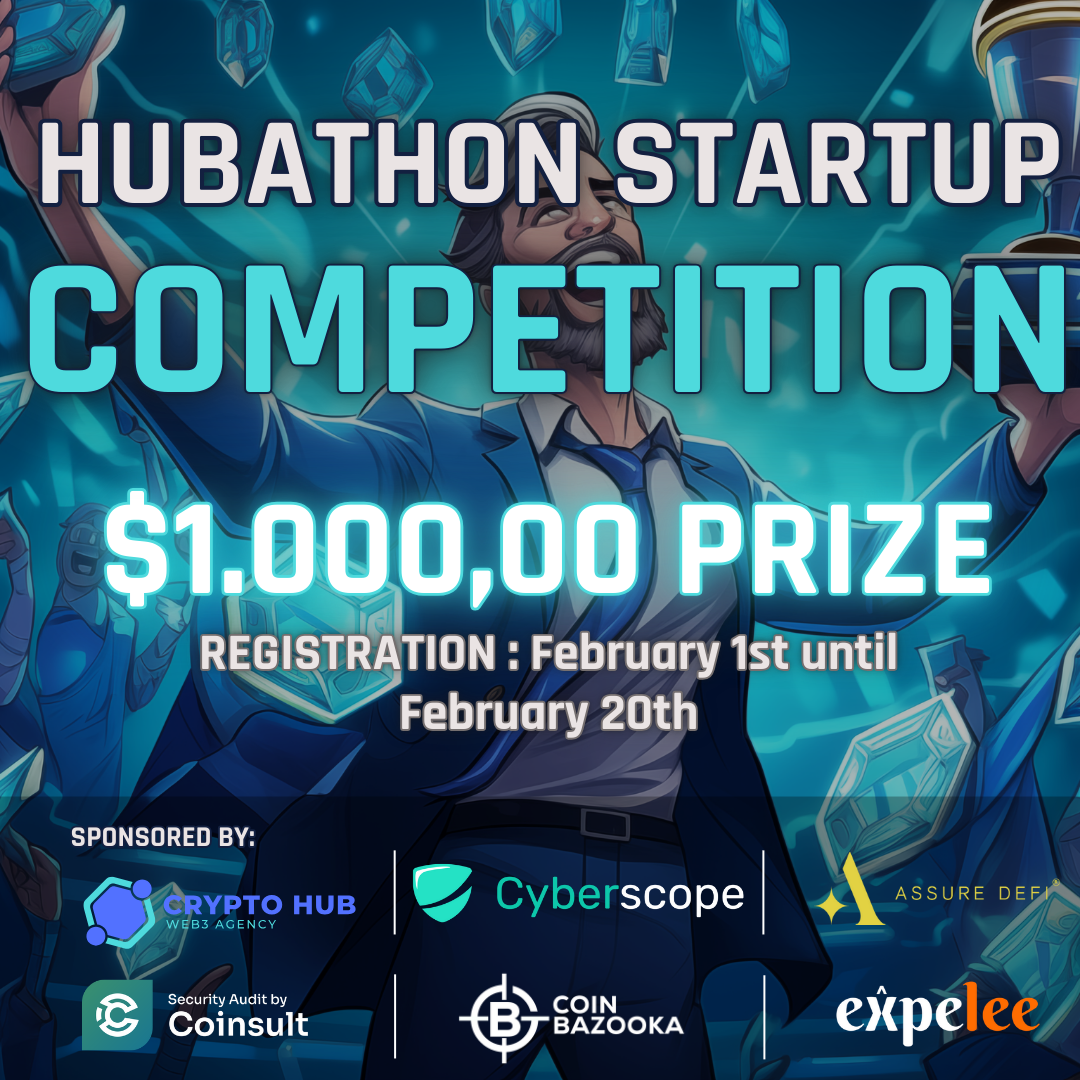Latest News
Unlocking the Power of Etched ASIC: Revolutionizing AI Hardware | MATIC News


Etched is making waves in the artificial intelligence hardware space with its revolutionary new AI accelerator chip. The Silicon Valley startup, founded in 2022 by Harvard dropouts Gavin Uberti and Chris Zhu, has developed a custom application-specific integrated circuit (ASIC) called Sohu that is purpose-built to run transformer models – the architecture behind today’s most advanced AI systems.
Etched transformer ASICS for LLMs
Etched claims its Sohu chip can process AI workloads up to 20 times faster than Nvidia’s top-of-the-line GPUs while using significantly less power. With $120 million in fresh funding and partnerships with major cloud providers, Etched is positioning itself as a formidable challenger to Nvidia’s dominance in AI chips.
Primary Venture Partners and Positive Sum Ventures led the funding round, which included participation from high-profile investors like Peter Thiel, Github CEO Thomas Dohmke, and former Coinbase CTO Balaji Srinivasan. As transformer models continue to drive breakthroughs in generative AI, Etched’s specialized hardware could reshape the landscape of AI computing.
Etched’s approach targets the complexities of GPUs and TPUs, particularly the need to handle arbitrary CUDA and PyTorch code, which demands sophisticated compilers. While other AI chip developers like AMD, Intel, and AWS have invested billions into software development with limited success, Etched is narrowing its focus. By exclusively running transformers, Etched can streamline software development for these models.
Most AI companies use transformer-specific inference libraries such as TensorRT-LLM, vLLM, or HuggingFace’s TGI. Although somewhat inflexible, these frameworks suffice for most needs because transformer models across different applications—text, image, or video—are fundamentally similar. This allows users to adjust model hyperparameters without altering the core model code. However, the most prominent AI labs often require custom solutions, employing engineers to optimize GPU kernels meticulously.
Etched aims to eliminate the need for reverse engineering by making its entire software stack open source, from drivers to kernels. This openness allows engineers to implement custom transformer layers as needed, enhancing flexibility and innovation.
Etched’s approach to AI hardware is comparable to the advancements seen with Groq’s LPU Inference Engine. Groq’s LPU, a dedicated Language Processing Unit, has set new benchmarks in processing efficiency for large language models, surpassing traditional GPUs in specific tasks. According to ArtificialAnalysis.ai, Groq’s LPU achieved a throughput of 241 tokens per second with Meta AI’s Llama 2-70b model, demonstrating its capability to process large volumes of more straightforward data more efficiently than other solutions.
This level of performance spotlights the potential for specialized AI hardware to revolutionize the field by offering faster and more efficient processing capabilities tailored to specific AI workloads. Etched claims its ASIC achieves as many as 500,000 tokens per token with its hardware, dwarfing Groq’s performance.
ASICs changed the game for Bitcoin; will they do the same for AI?
The introduction of ASICs for Bitcoin mining marked a revolutionary shift in the landscape, fundamentally altering the network dynamics. When ASICs were first introduced in 2013, they represented a quantum leap in mining efficiency compared to the CPUs and GPUs that had previously dominated the field. This transition profoundly impacted Bitcoin’s ecosystem, dramatically increasing the network’s overall hash rate and, consequently, its security.
ASICs, being purpose-built for Bitcoin mining, offered unprecedented computational power and energy efficiency, quickly rendering CPU and GPU mining obsolete for Bitcoin. This shift led to a rapid centralization of mining power, as only those with access to ASIC hardware could profitably mine Bitcoin. The ASIC era ushered in industrial-scale mining operations, transforming Bitcoin mining from a hobby accessible to individual enthusiasts into a highly competitive, capital-intensive industry.
Etched history and development
Etched’s vision began in 2022 when AI technologies like ChatGPT were not yet prevalent, and image and video generation models primarily relied on U-Nets and CNNs. Since then, transformers have become the dominant architecture across various AI domains, validating Etched’s strategic focus.
The company is rapidly advancing toward one of the quickest chip launches in history. It has attracted top talent from major AI chip projects, partnered with TSMC for their advanced 4nm process, and secured essential resources such as HBM and server supply to support initial production. Early customers have already committed tens of millions of dollars to Etched’s hardware.
This rapid progress could dramatically accelerate AI capabilities. For instance, AI models could become 20 times faster and cheaper overnight. Current limitations could be drastically reduced, such as the slow response times of models like Gemini or the high costs and long processing times of coding agents. Real-time applications, from video generation to AI-driven conversations, could become feasible, addressing the current bottlenecks faced even by leading AI firms like OpenAI during peak usage periods.
Etched’s advancements promise to make real-time video, calls, agents, and search a reality, fundamentally transforming AI capabilities and their integration into everyday applications.
Mentioned in this article
Latest News
Crypto VC investment ‘continued rebound’ in Q2 with $3.2 billion invested – Galaxy | MATIC News


Venture capital investments in crypto continued to rebound in the second quarter, with a total $3.2 billion invested during the period — up 28% compared to $2.5 billion in the previous quarter, according to Galaxy Digital latest research report.
The report also identified a 94% quarterly surge in median pre-money valuation, which rose to $37 million from $19 million in the first quarter.
Galaxy noted the second quarter’s median pre-money valuation is the highest since the fourth quarter of 2021 and represents an almost all-time high. It attributed the surge to a more competitive market, giving companies greater negotiation leverage in deals.
Meanwhile, the second quarter median deal size grew to $3.2 million from $3 million, up 7% after remaining largely steady for five quarters. Deal count fell to 577 in the second quarter, down from 603 in the first quarter but up from less than 400 in the fourth quarter of 2023.
According to the report:
“Despite a lack of available investment capital compared to previous peaks, the resurgence of the crypto market… is leading to significant competition and [FOMO] among investors.”
The report highlighted a positive shift in crypto venture capital sentiment, buoyed by a nearly 50% year-to-date rise in Bitcoin and Ethereum prices. If the trend continues, 2024 will have the third-highest investment capital and deal count numbers after the bull markets of 2021 and 2022.
However, the report also noted that despite Bitcoin experiencing a significant rise since January 2023, venture capital activity has not kept pace, trading well below the levels seen when the flagship crypto last traded above $60,000 in 2021 and 2022.
The divergence is attributed to several factors, including crypto-native catalysts like Bitcoin ETFs and emerging areas such as restaking and Bitcoin Layer 2 solutions. Additionally, pressures from crypto startup bankruptcies, regulatory challenges, and macroeconomic headwinds, particularly interest rates, have collectively contributed to the breakdown.
Other data and trends
Specific project categories led fundraising — including Web3, which brought in $758 million or 24% of all capital. Infrastructure brought in over $450 million (15%), trading and exchanges brought in under $400 million (12%), and Layer 1 brought in under $400 million (12%).
Bitcoin Layer 2 networks continued to see significant investments of $94.6 million, up 174% on a quarterly basis. Galaxy said “investor excitement remains high” around the possibility of composable blockspace attracting DeFi and NFT projects to Bitcoin.
US companies dominated VC investment, attracting 53% of all capital and 40% of deals. Galaxy said US dominance exists despite regulatory change that could cause companies to leave the country and warned policymakers to be aware of their impact.
Early-stage firms received about 78% of capital, while late-stage companies received 20% of all capital. Galaxy said that larger general VC firms have left the sector or scaled down their activity, reducing the ability of later-stage startups to raise money.
Mentioned in this article
Latest News
Bittensor proposes burning 10% supply to stabilize TAO following $8 million exploit | MATIC News


OpenTensor Foundation (OTF) has proposed burning 10% of the Bitttensor (TAO) supply to stabilize the token’s price in response to a recent exploit that led to the loss of $8 million worth of the tokens.
The decentralized AI network has put forward a vote for users to decide on the burn. Active voters participating in the proposal will be rewarded with compensatory DAO rewards at a later date.
The exploit, which occurred on July 2, saw a Bittensor user lose 32,000 TAO tokens due to a leaked private key. The incident caused an immediate 15% drop in TAO’s price, hitting a six-month low of $227. The price has since rebounded slightly to $240.
Attack timeline
The attack timeline reveals that the incident began on July 2 at 7:06 P.M. UTC when funds started being transferred out of wallets.
OTF detected the abnormal transfer volume and initiated a war room by 7:25 P.M. UTC, and by 7:41 P.M. UTC, the team had neutralized the attack by placing validators behind a firewall and activating safe mode to prevent nodes from connecting to the chain.
During this period, the network was configured to only produce blocks, halting all transactions to prevent further losses and allowing time for a thorough investigation.
The root cause of the attack was traced back to a malicious package in the PyPi Package Manager version 6.12.2, which compromised user security. The package, posing as a legitimate Bittensor package, contained code designed to steal unencrypted coldkey details.
When users downloaded this package and decrypted their coldkeys, the decrypted bytecode was sent to a remote server controlled by the attacker.
The incident prompted an immediate response from the OTF team, which prioritized the security breach over regular updates and maintenance. The disruption has been a significant test for the network, highlighting both its vulnerabilities and the resilience of its infrastructure.
Aftermath
Despite the severity of the attack, some validators, such as RoundTable 21, confirmed that their delegators’ funds remained secure, emphasizing that the exploit did not impact all users uniformly.
However, the decision to halt the chain has led to a debate within the community about its implications for Bittensor’s claim of decentralization. Critics argue that the ability to pause the chain contradicts the principles of a decentralized AI network, while supporters believe it was necessary to protect users’ assets.
OTF plans to gradually resume normal operations of the Bittensor blockchain, ensuring a safe and responsible approach. Regular progress updates will be provided to the community.
As a precaution, users who suspect their wallets were compromised are advised to create new wallets and transfer their funds once the blockchain resumes normal operation. Additionally, upgrading to the latest version of Bittensor is strongly recommended.
Moving forward, Bittensor will implement enhanced package verification processes, increase the frequency of security audits, adopt best practices in public security policies, and improve monitoring and logging of package uploads and downloads.
The proposed token burn and ongoing security enhancements aim to restore confidence in the TAO ecosystem. The outcome of the vote will play a crucial role in stabilizing and securing the network, with the community eagerly awaiting further updates from the developers.
Mentioned in this article
Latest News
Europe’s largest Bitcoin miner Northern Data to launch IPO in the US | MATIC News


Europe’s largest Bitcoin miner, Northern Data AG, has announced plans for a substantial initial public offering (IPO) in the US at a valuation between $10 billion and $16 billion.
The IPO, which will be held on the Nasdaq stock exchange, is scheduled for the first half of 2025 and may also include selling a minority stake to investors prior to the public listing.
Following the IPO announcement, Northern Data’s shares on the XETRA stock exchange surged by over 5%, reaching €25. This positive market reaction indicates strong investor confidence in the company’s future prospects. The firm first considered an IPO in 2021 but decided against it at the time.
The upcoming offering will highlight two of Northern Data’s key business units: Taiga, which handles the company’s cloud computing activities, and Ardent, which manages its data centers. Both units are crucial to Northern Data’s strategy to capitalize on the rapidly expanding AI sector.
The crypto industry continues to face regulatory challenges. Previous attempts by digital asset firms to go public, including Circle, encountered difficulties due to regulatory scrutiny. However, Northern Data’s focus on AI and cloud computing may help it navigate these challenges more effectively.
AI pivot
Originally founded as Northern Bitcoin AG, Northern Data has grown into a significant player in the Bitcoin mining industry. In recent years, the company has diversified its operations to include artificial intelligence (AI) and cloud computing, responding to the decreasing profitability of Bitcoin mining and the growing opportunities in these fields.
In November 2023, Northern Data secured $610 million in debt financing from Tether. The investment is intended to strengthen Northern Data’s AI and cloud computing operations.
The financing followed a strategic partnership between the two companies announced in September 2023. The partnership aimed to focus on AI, peer-to-peer communications, and data storage solutions.
Northern Data’s pivot towards AI and cloud computing reflects a broader industry trend. As the profitability of Bitcoin mining declines, many companies, including Core Scientific and Hut 8 Corp, are exploring new revenue streams.
Committed to Bitcoin mining
While diversifying its business, Northern Data remains committed to Bitcoin mining and plans to continue expanding its footprint in the industry.
Peak Mining, the company’s US-based Bitcoin mining unit, is a significant part of its operations, with nearly 700 megawatts of high-performance computing data centers. In 2023, Peak Mining mined 2,298 BTC, generating over $64 million in revenue despite an 18% year-over-year decrease in production.
Northern Data’s presence in the US has been growing steadily. In May, the company acquired its second 300-megawatt mining site, further solidifying its position in the American market. The expansion highlights Northern Data’s long-term commitment to Bitcoin mining, even as it explores new technological frontiers.
Mentioned in this article
-

 Hot Projects4 months ago
Hot Projects4 months agoBitcoin Blasts Past $70,000 to Register New All-Time High | MATIC News
-

 Latest News4 months ago
Latest News4 months agoCourt upholds SEC’s unregistered securities claims against Gemini, Genesis’ Earn program | MATIC News
-
Hot Projects2 months ago
Bitcoin Will Be Set For New ATHs If It Breaks This Resistance: Analyst | MATIC News
-

 Latest News2 months ago
Latest News2 months agoSix Coinbase customers claim the exchange is violating securities laws in new lawsuit | MATIC News
-

 Hot Projects3 months ago
Hot Projects3 months agoBitcoin ETF Inflows Could Eclipse $1 Trillion, Predicts Bitwise CIO | MATIC News
-

 Hot Projects3 months ago
Hot Projects3 months agoOndo Finance Joins BlackRock Tokenized Fund As Inflows Surpass $160M | MATIC News
-

 Latest News4 months ago
Latest News4 months agoOver $1 billion wiped off HEX’s valuation following Richard Heart’s disparaging remarks | MATIC News
-

 Hot Projects2 months ago
Hot Projects2 months agoPEPE Whales Go On Massive 720B Shopping Spree Amid Campaign For New ATHs, Is It Time To Get In? | MATIC News


